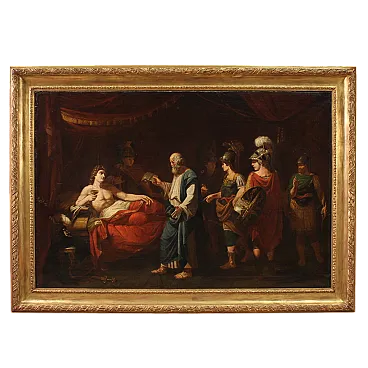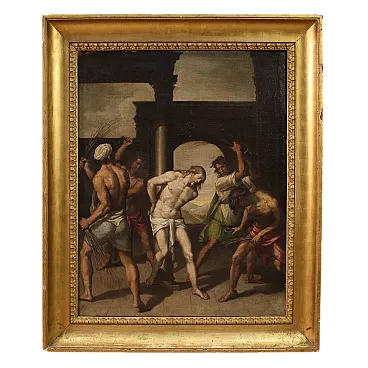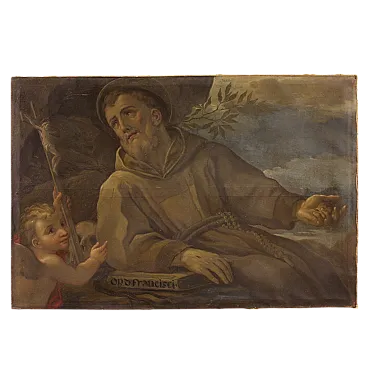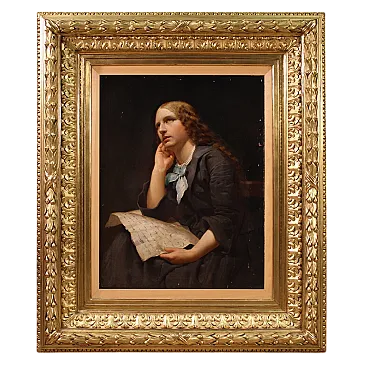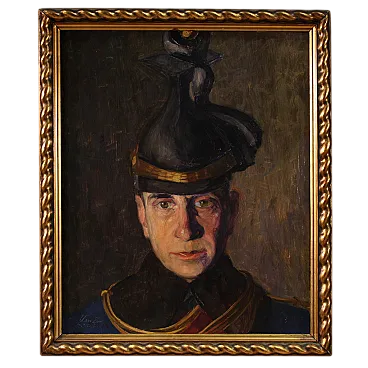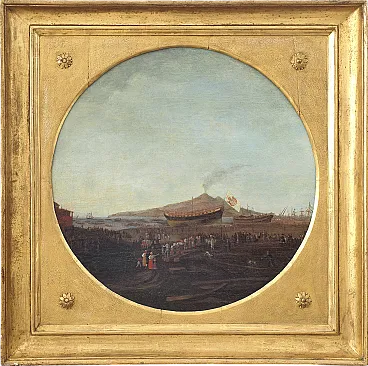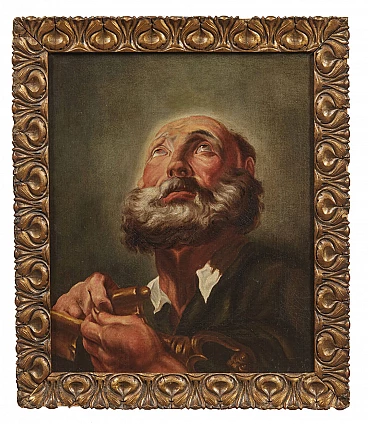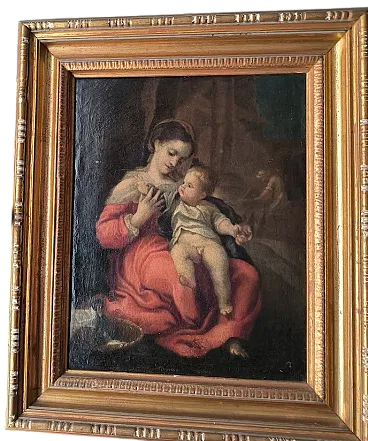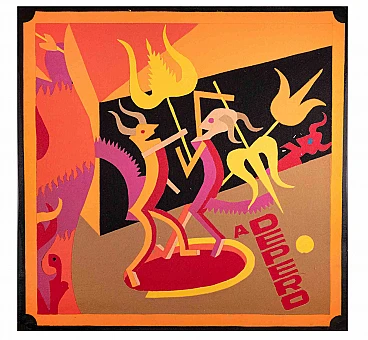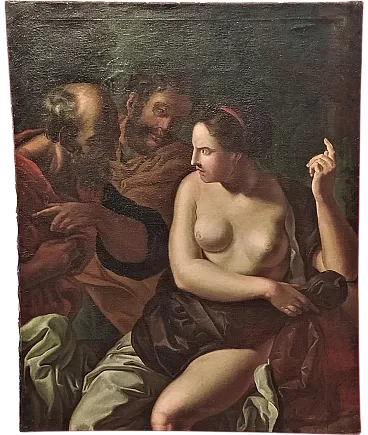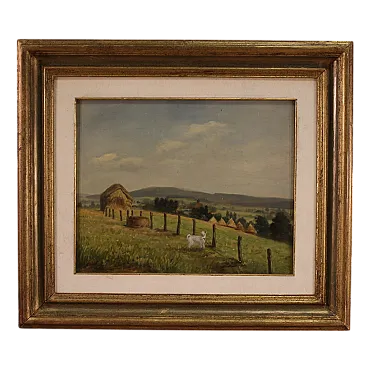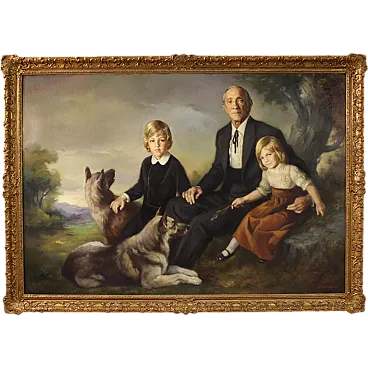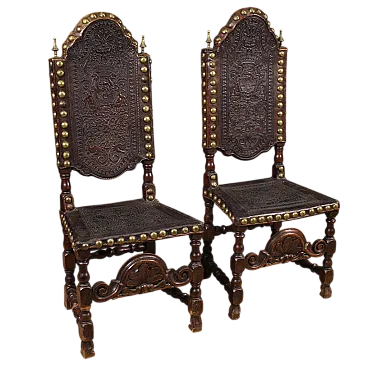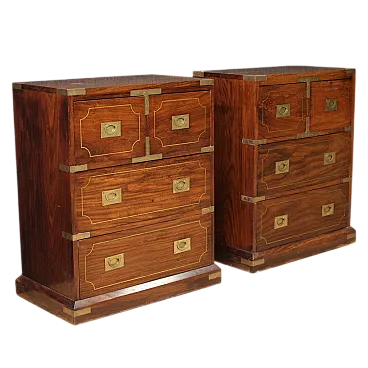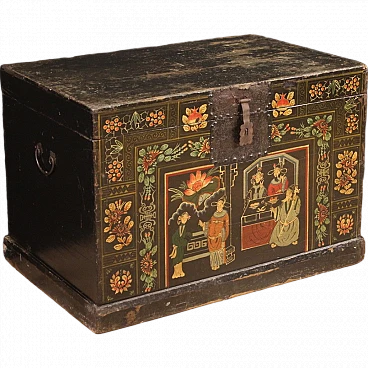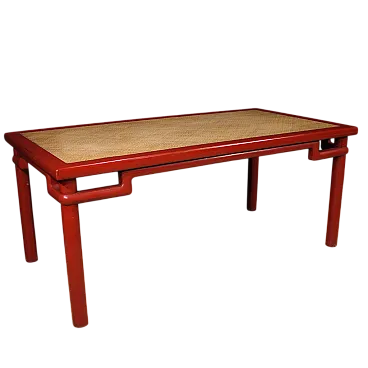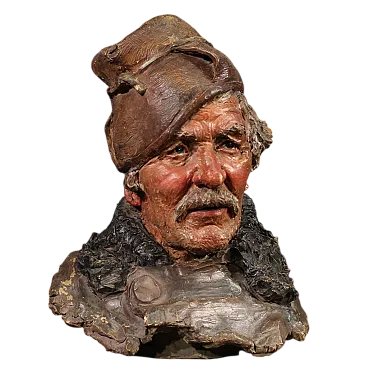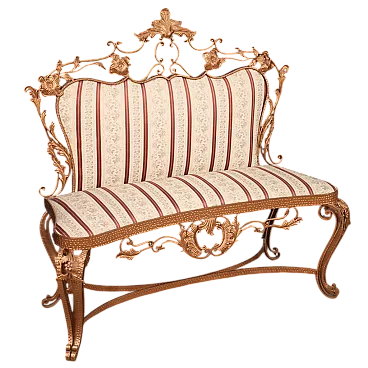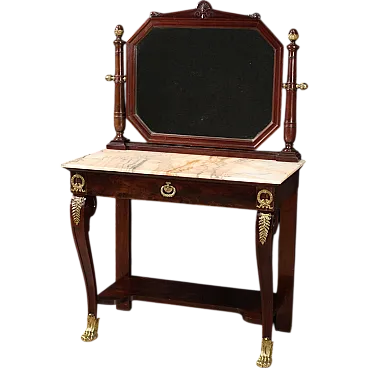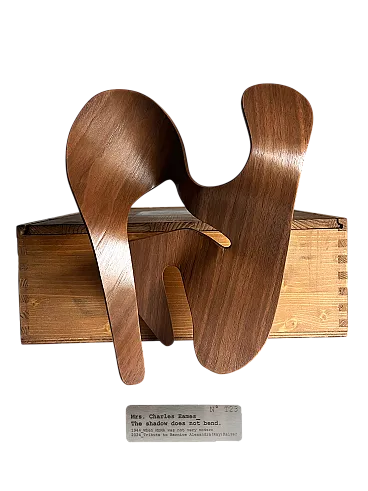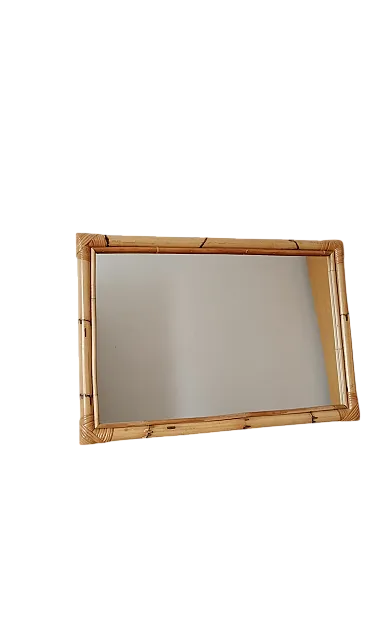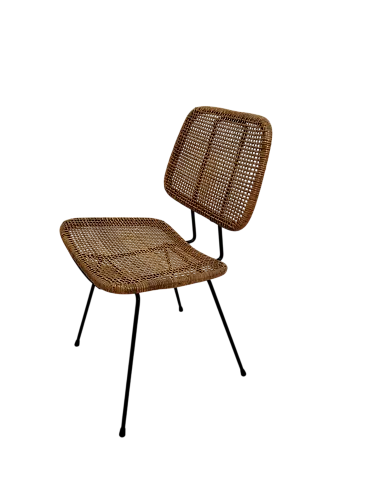French painting from the second half of the 19th century. Oil on canvas work depicting historical subject, The Last of the Merovingians, coeval copy of the famous painting by Evariste-Vital Luminais (1821-1896). Painting depicting the deposition of King Childerico III, the last Frankish king of the Merovingian line. Pippin the Short, in order to take Childerico's place, wrote to Pope Zacharias asking whether the title of King belonged to those who wielded power or to those of royal blood. The Pope replied that he who exercised power should be king. Having thus received the supreme pontiff's approval, Pepin the Short deposed the sovereign and took his place. Childerico, known as the Ghost King, was then shaved. His long hair was the symbol of his dynasty and royal rights. Cutting it off deprived him of these rights. A work that develops vertically, the details of the composition and the drapery of the robes are meticulous and well cared for. Note at lower left the crown abandoned in a corner together with the royal cloak. Modern carved and gilded wooden frame with beautiful decoration. Painting that has undergone restoration with re-staining, replacement of the frame and repainting in small places. Overall in good state of preservation. Light painting H 98 x W 79 cm.

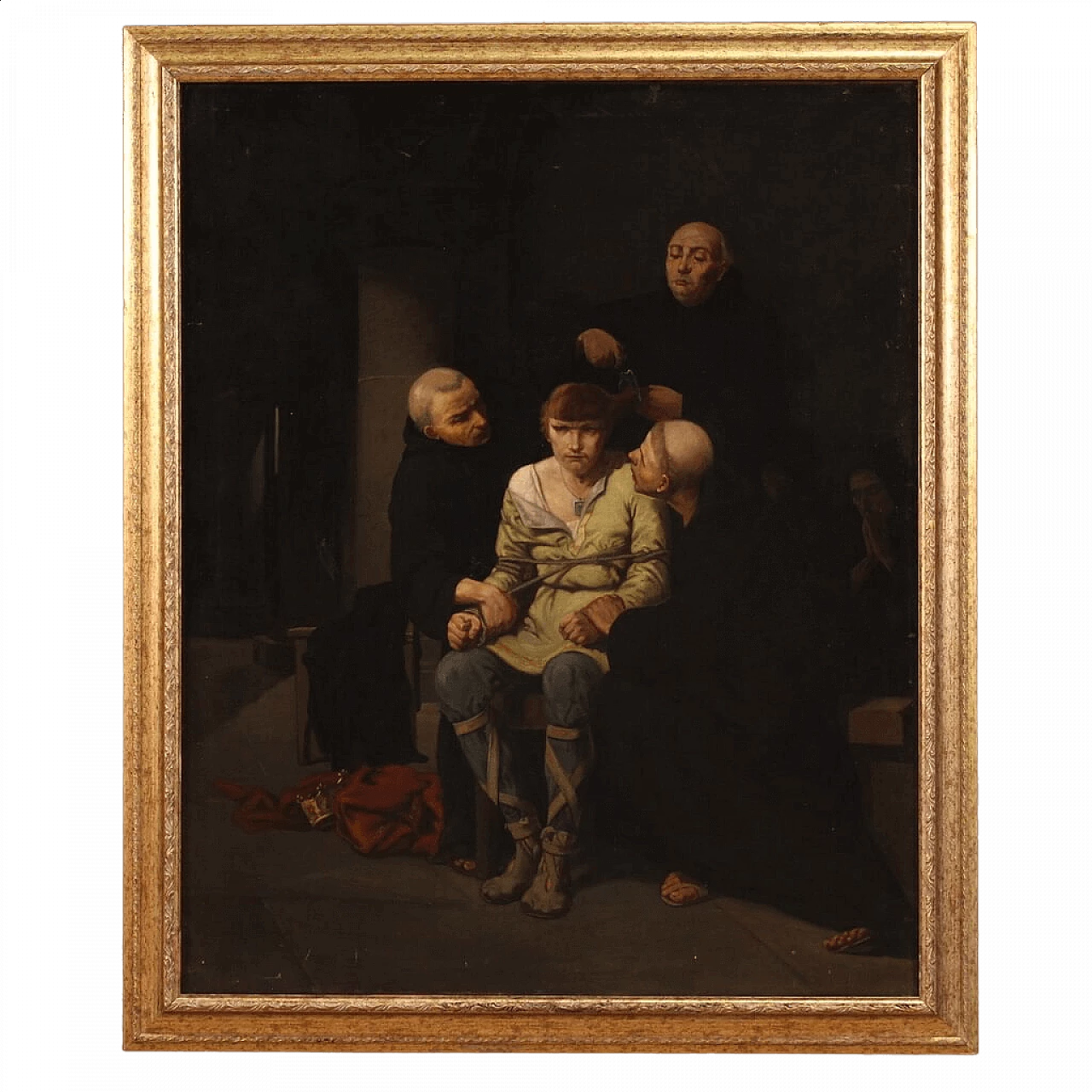
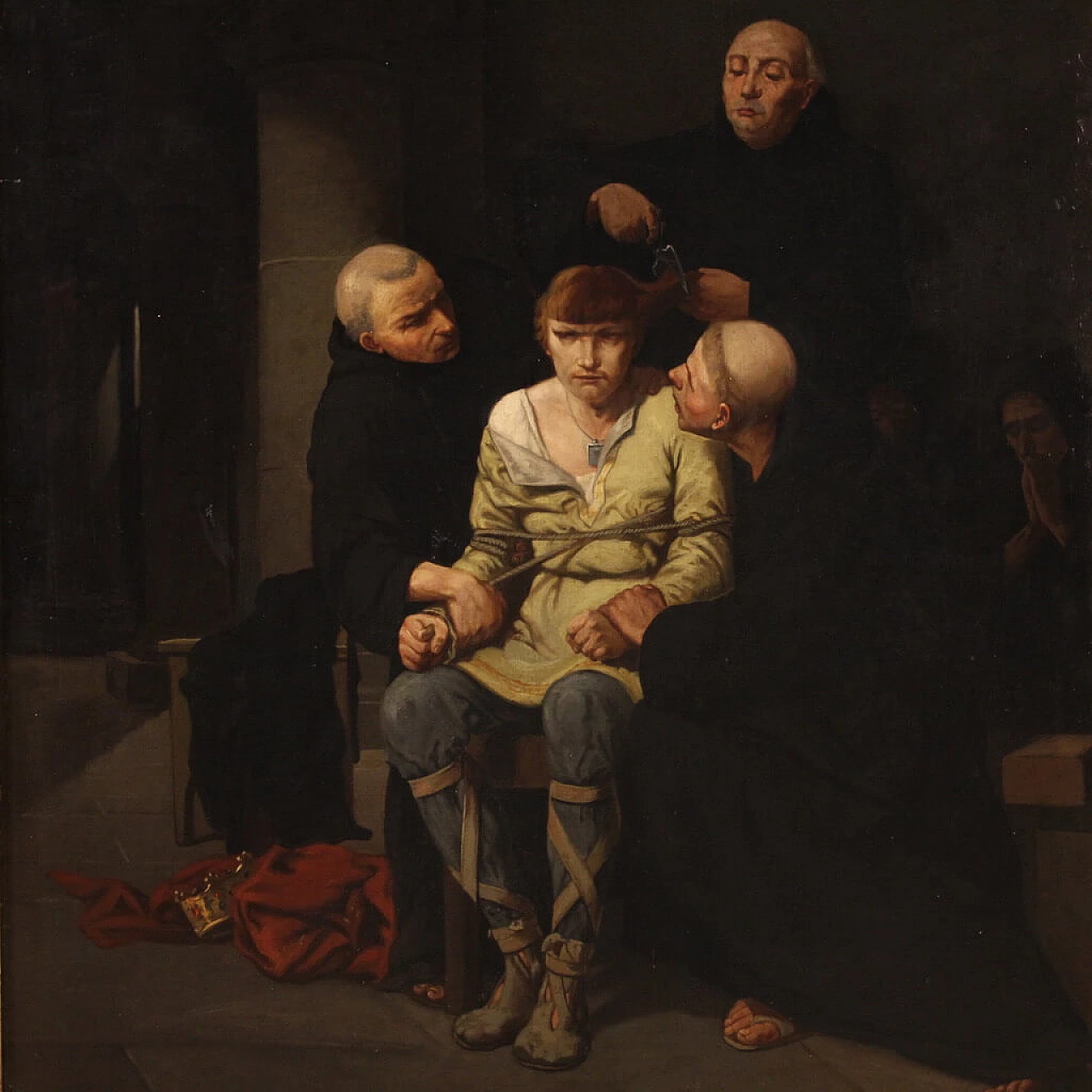
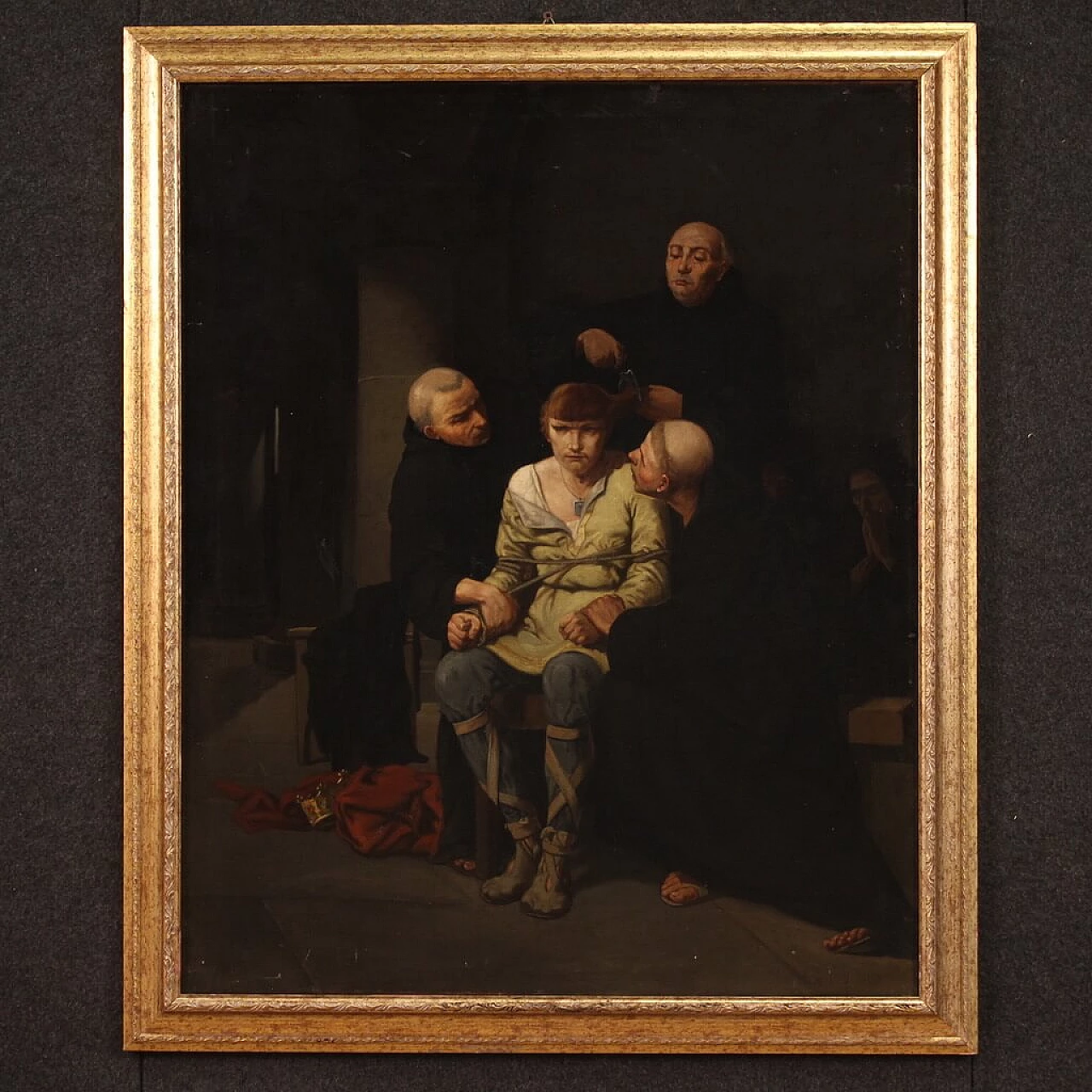
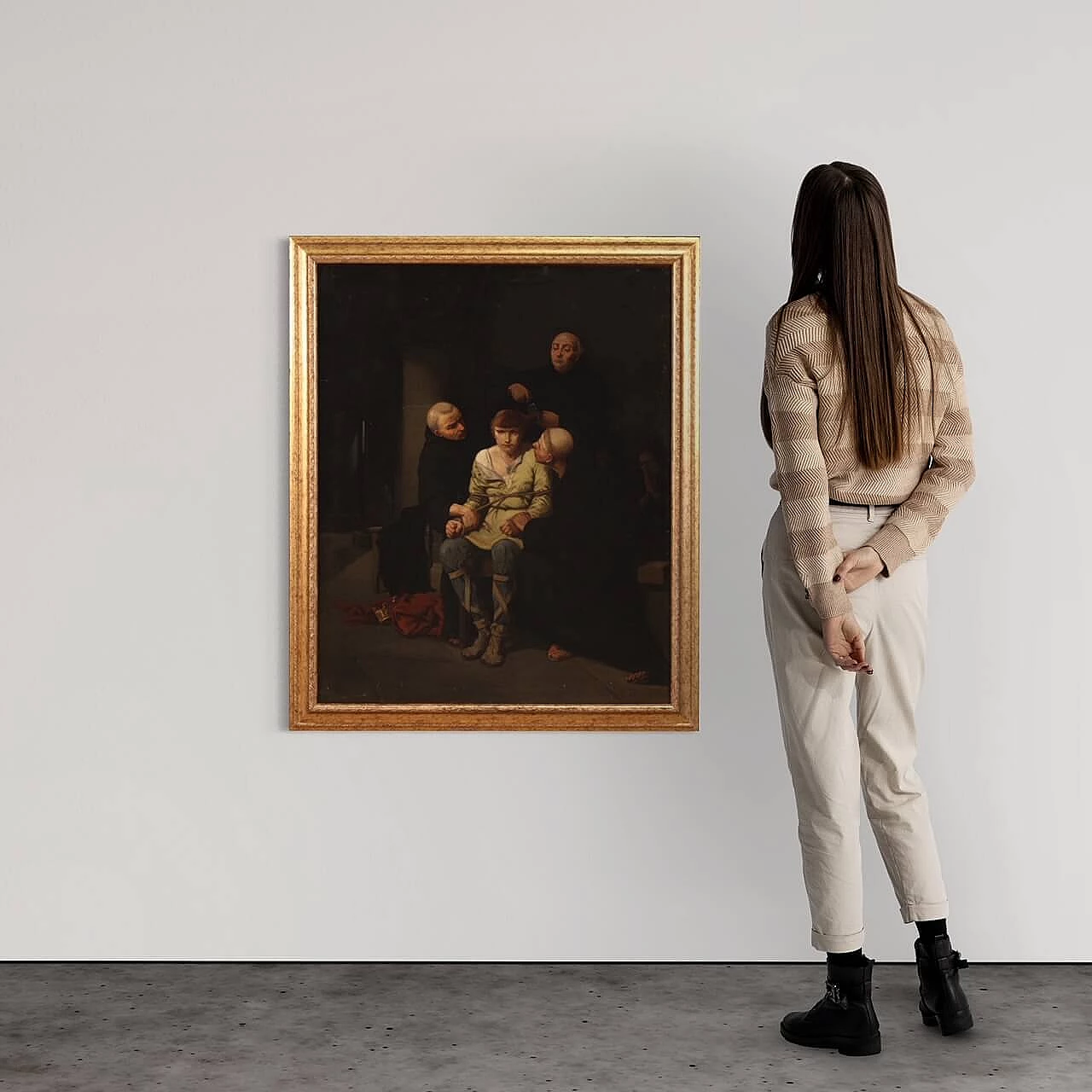
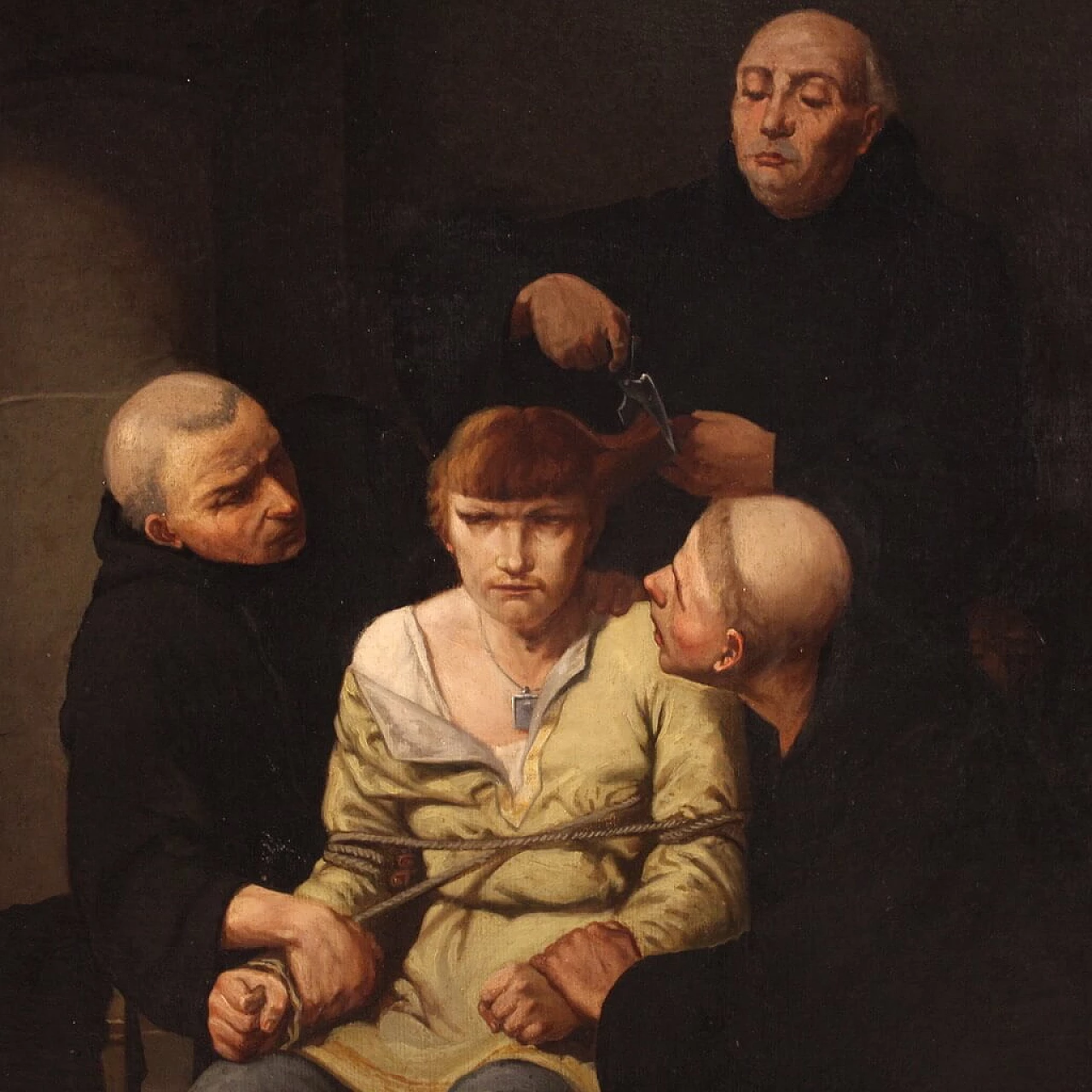
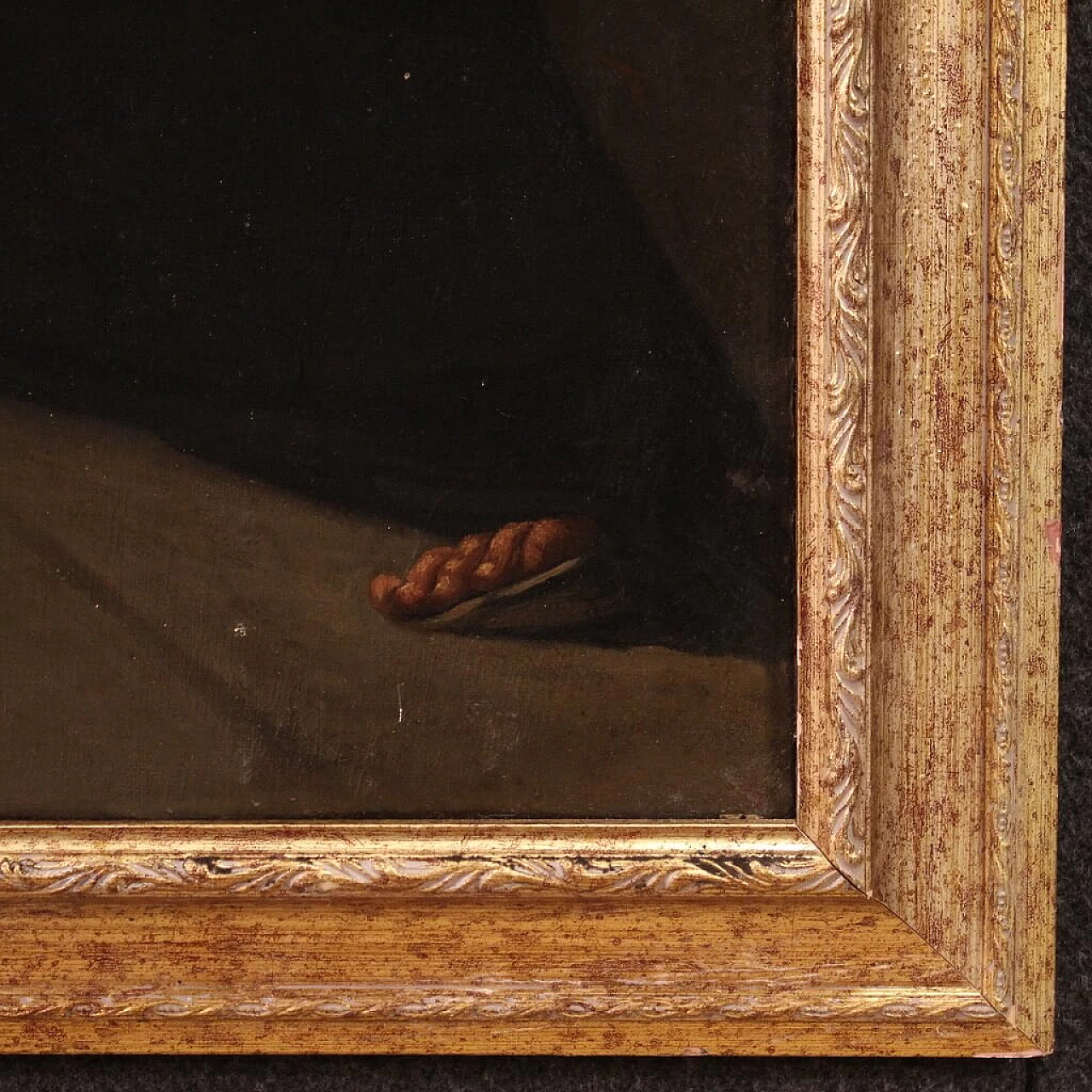
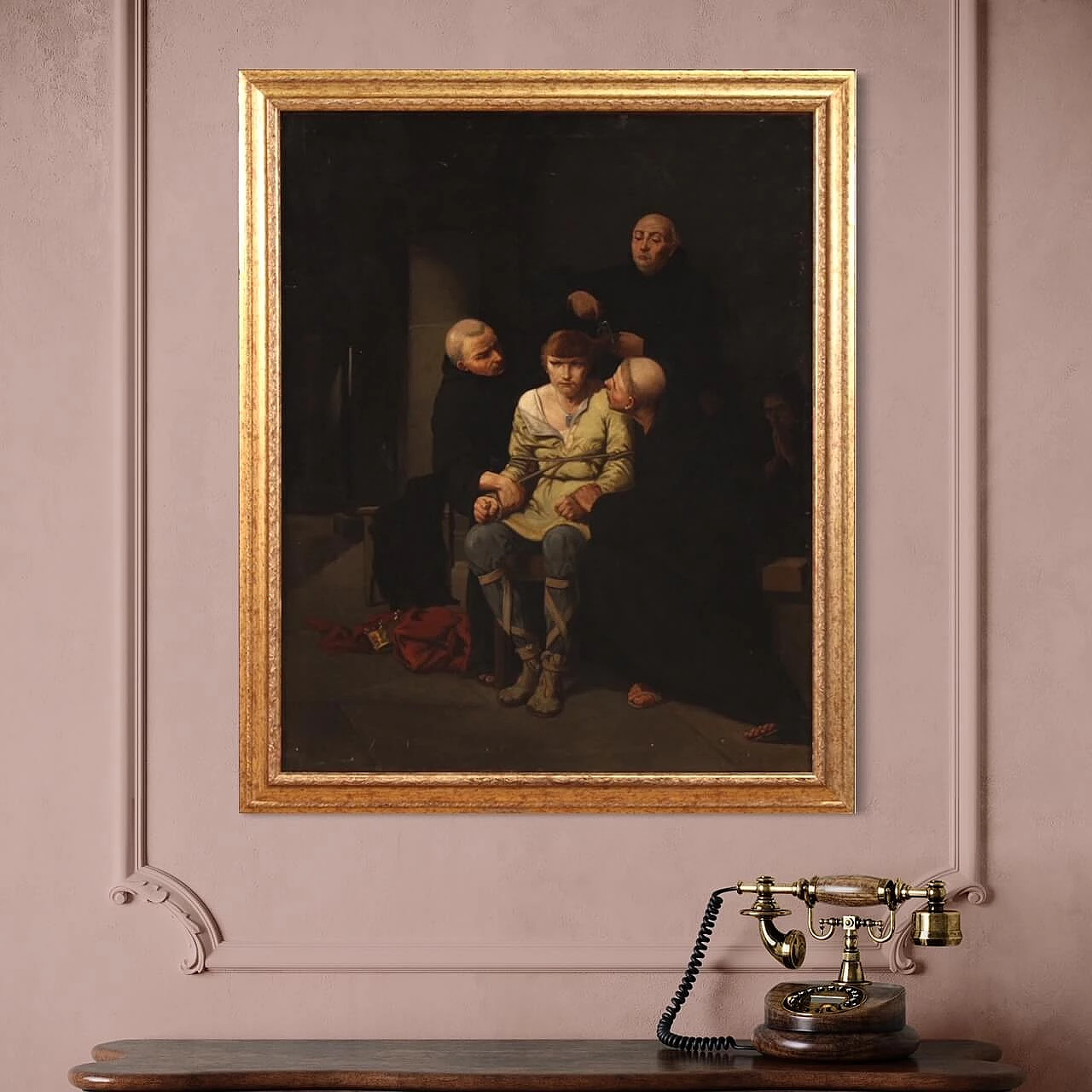
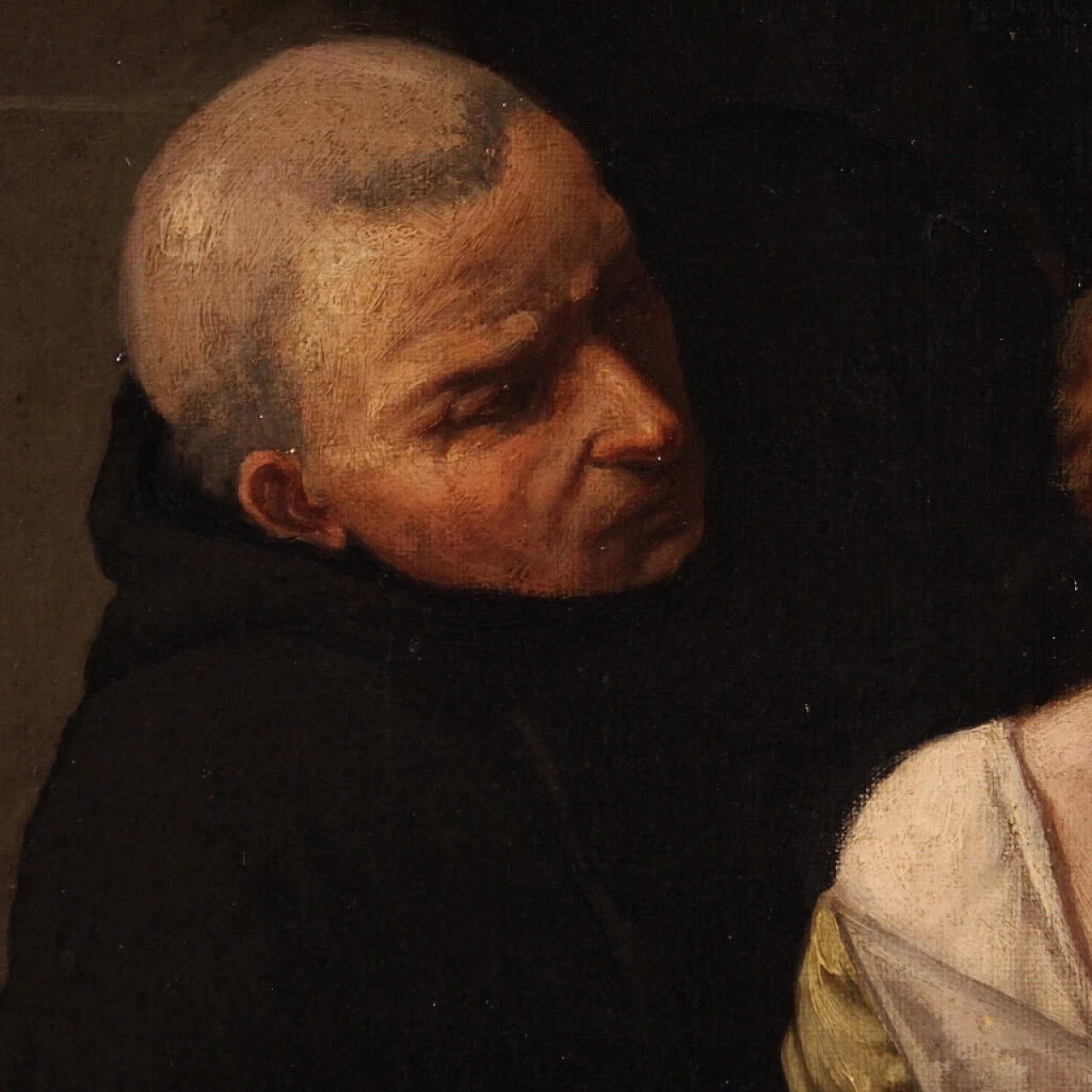
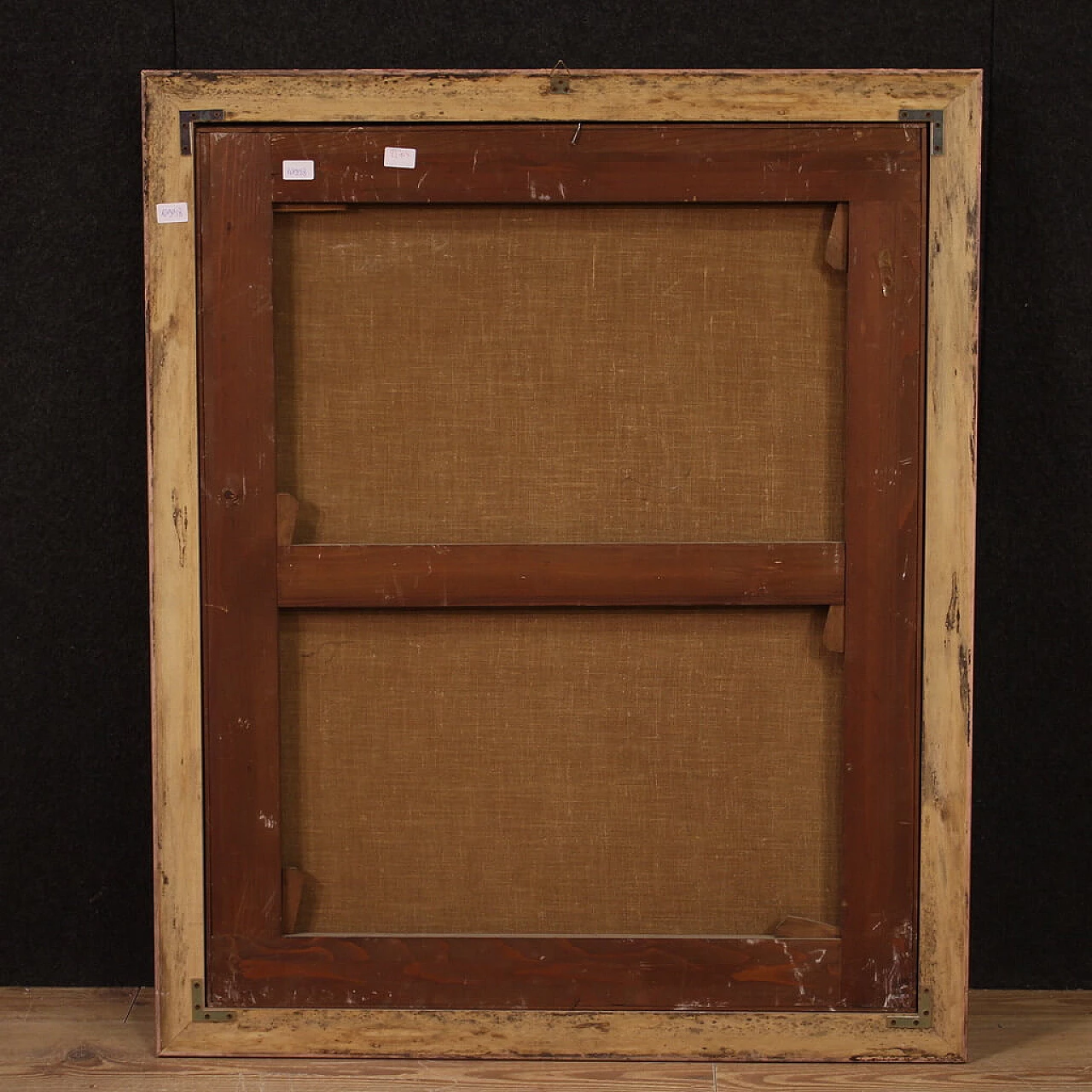
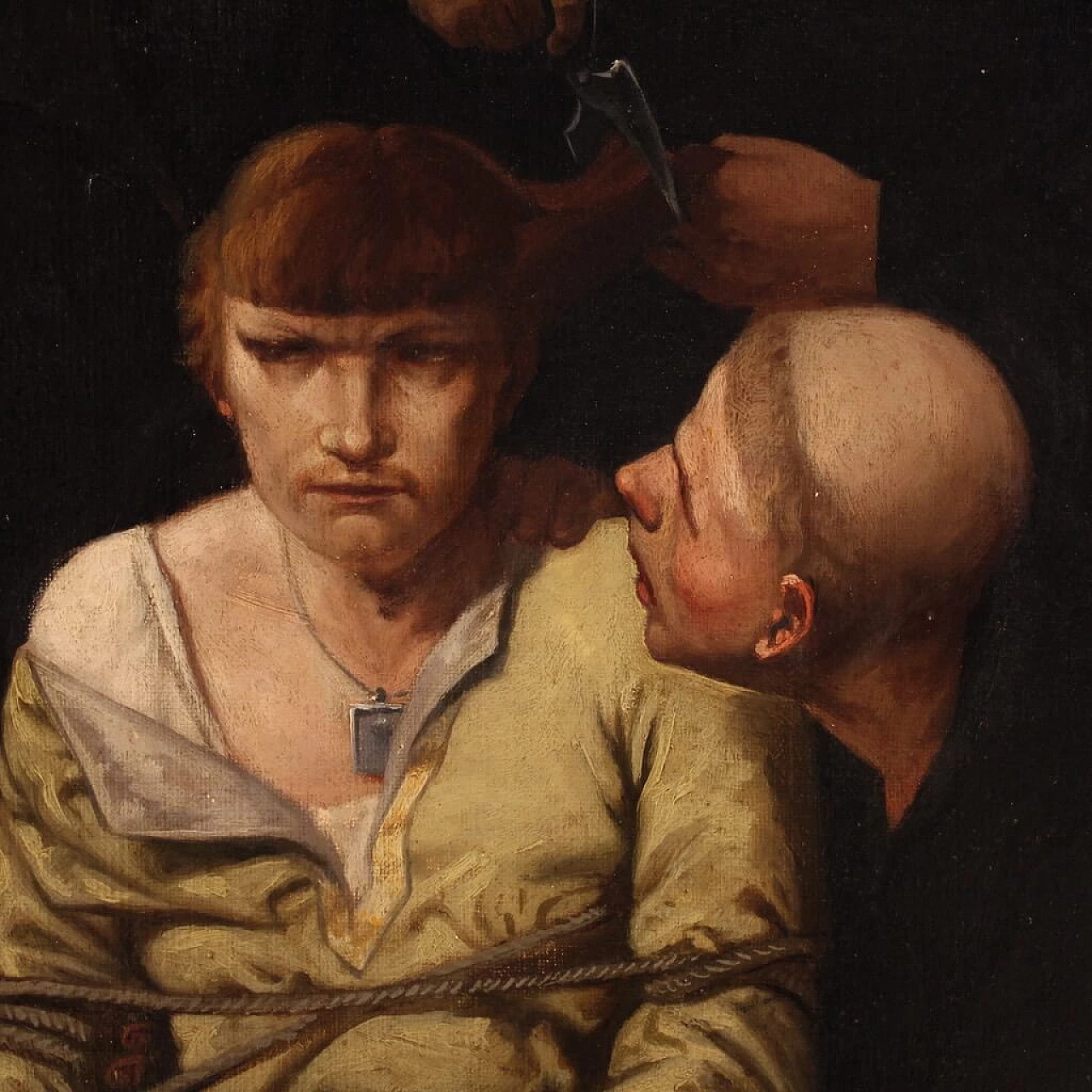
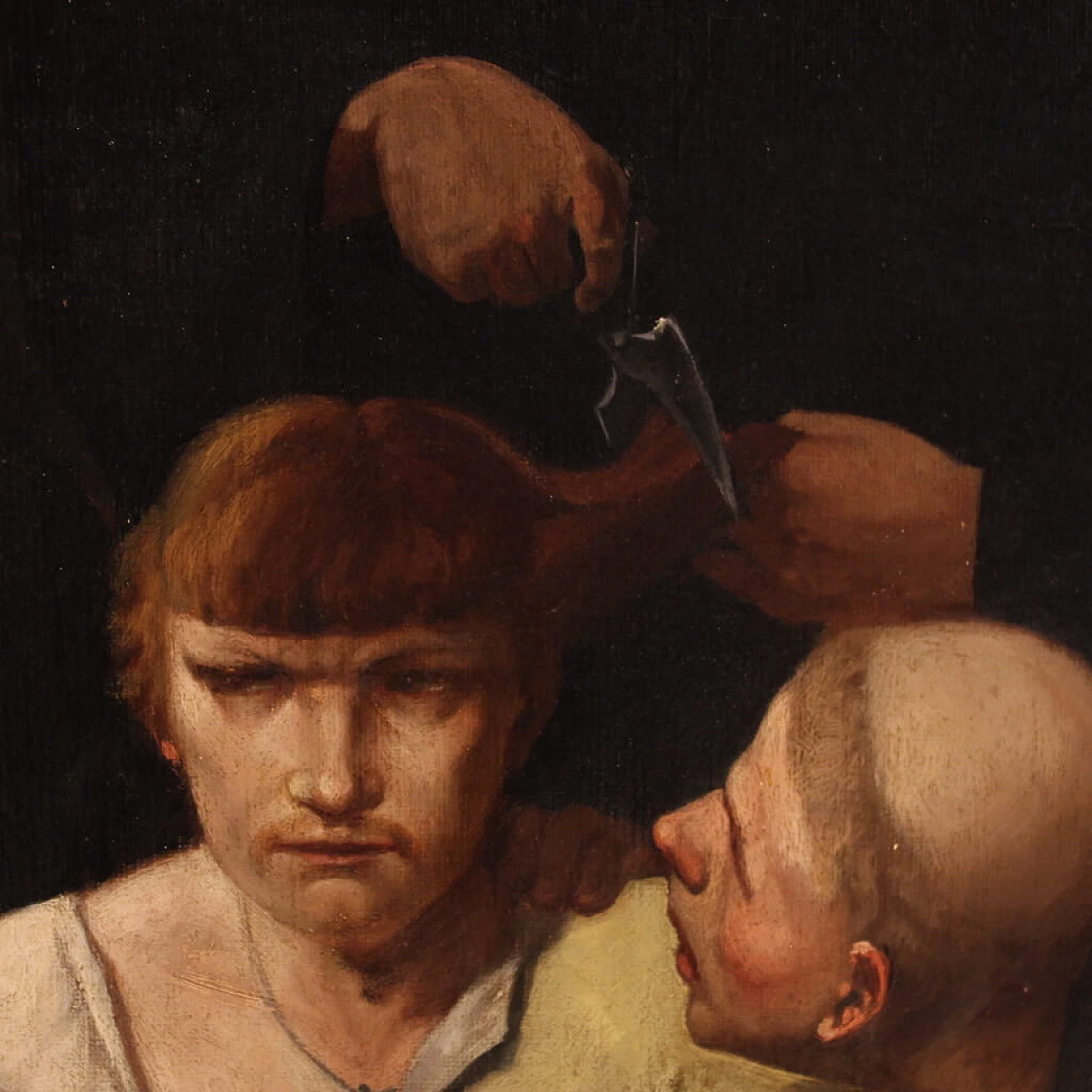
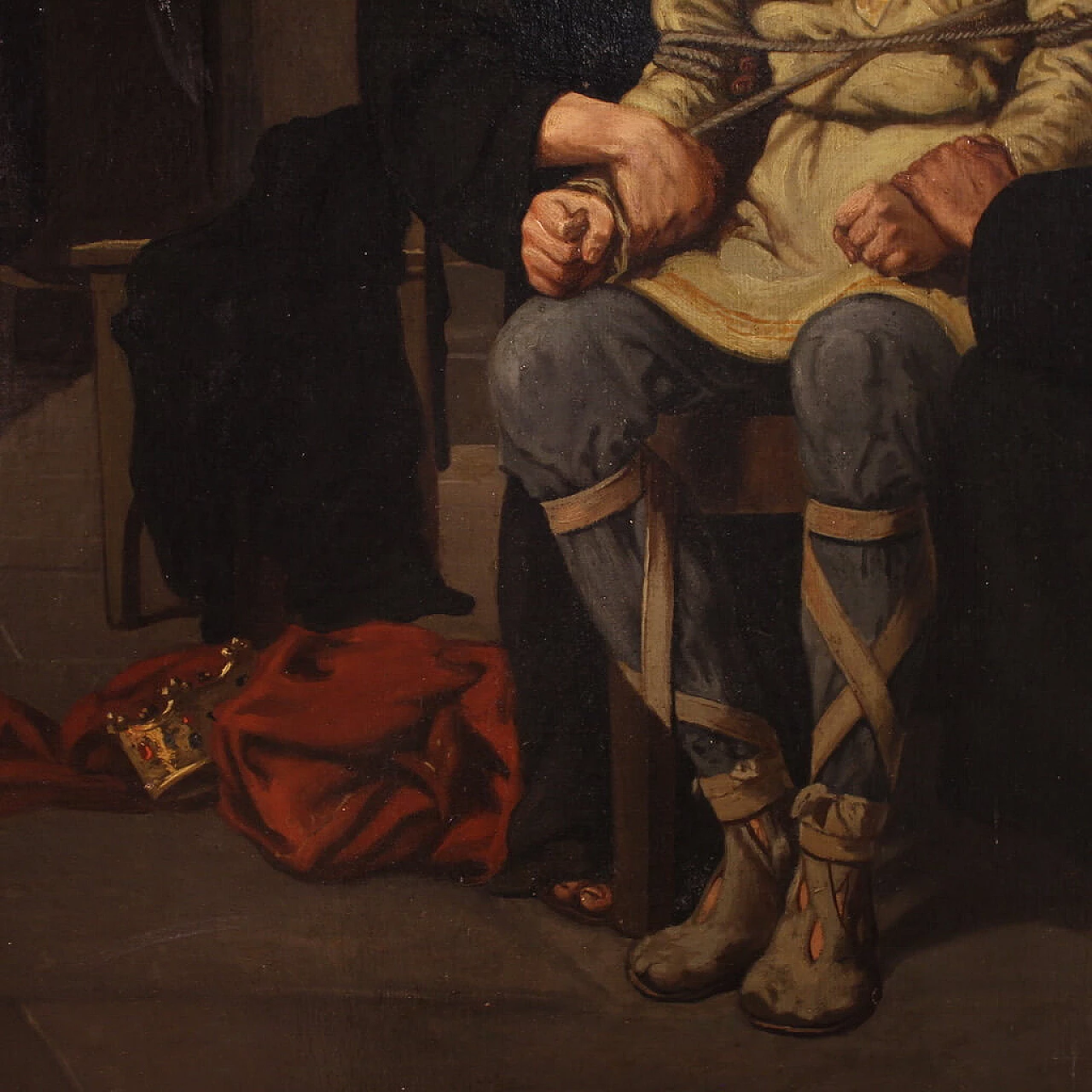
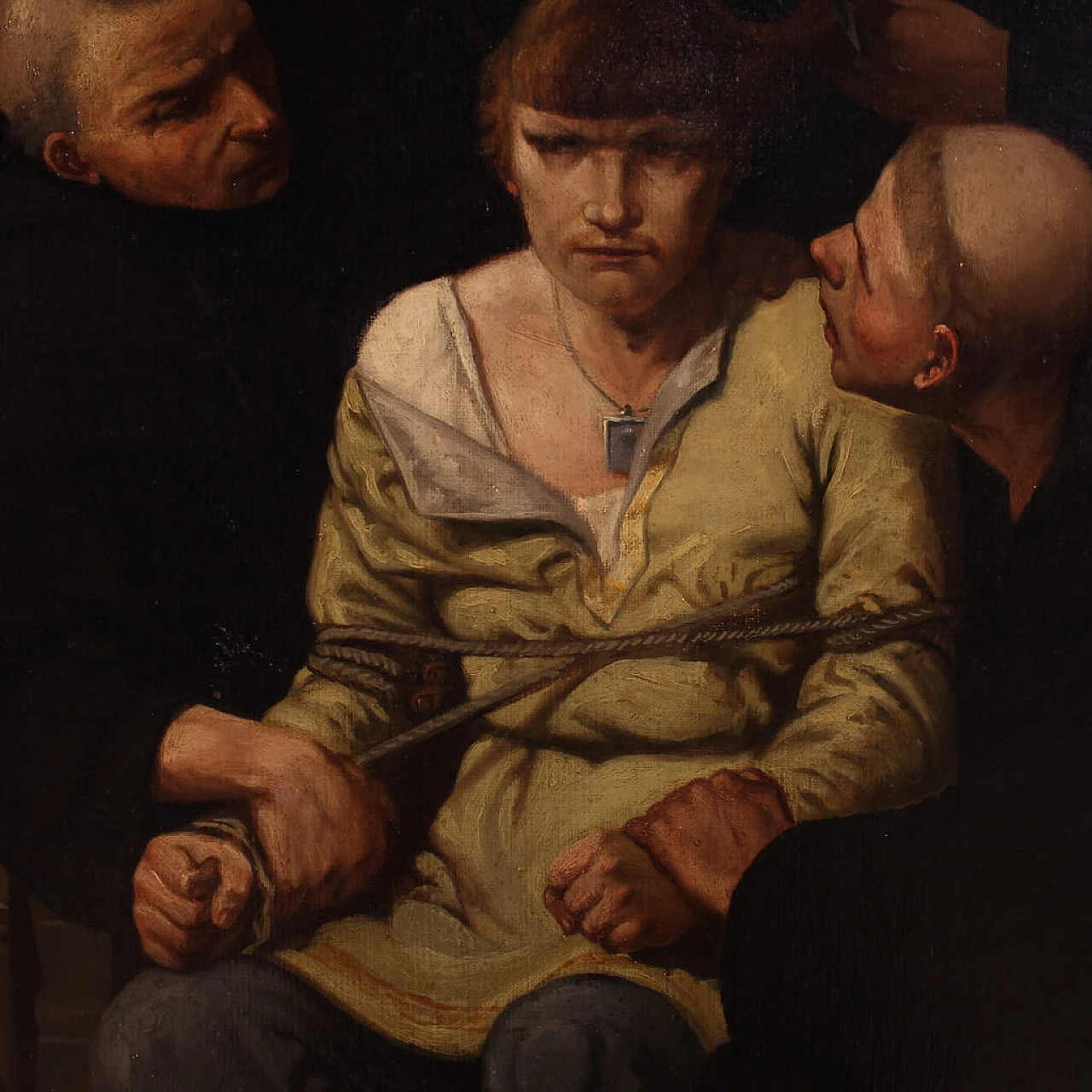
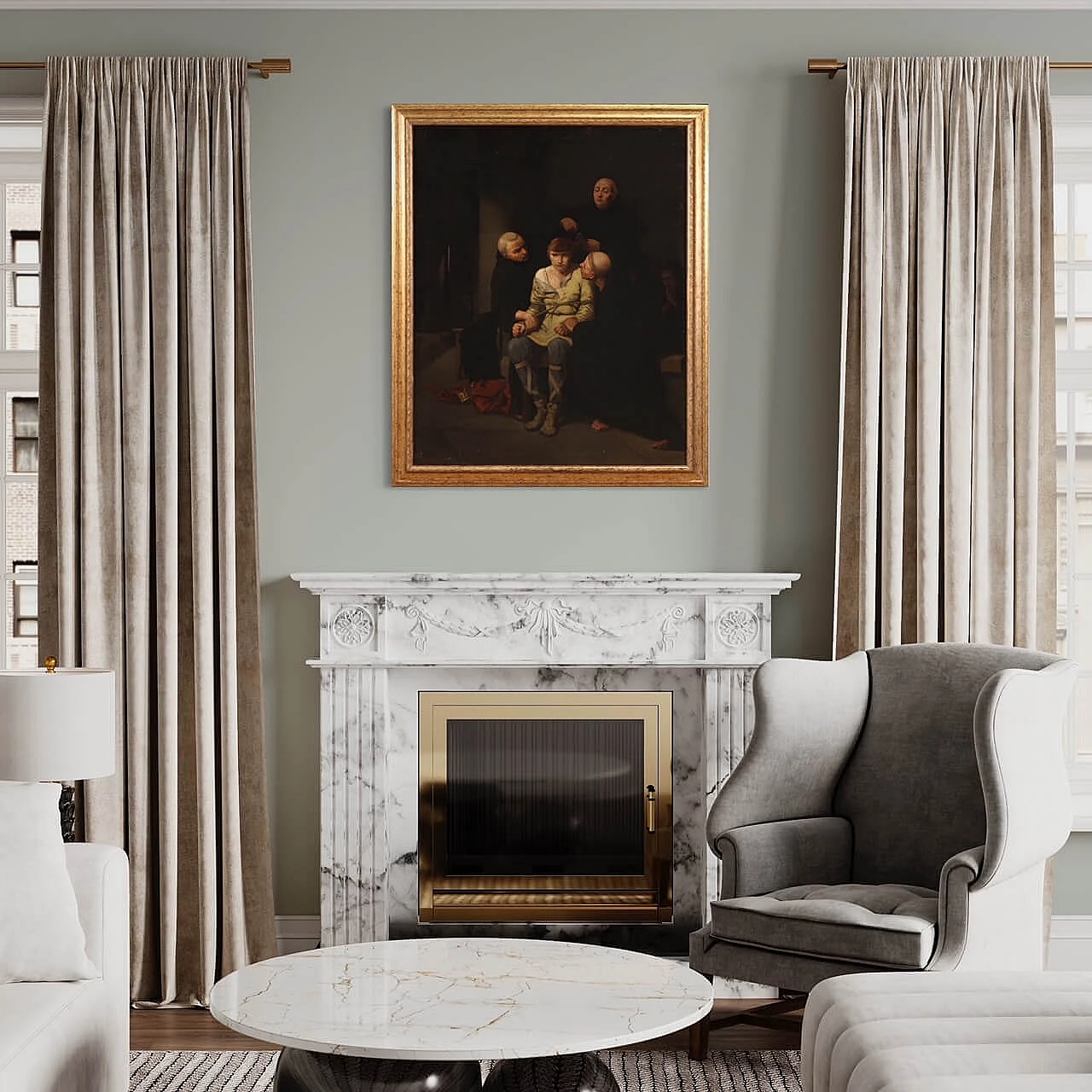
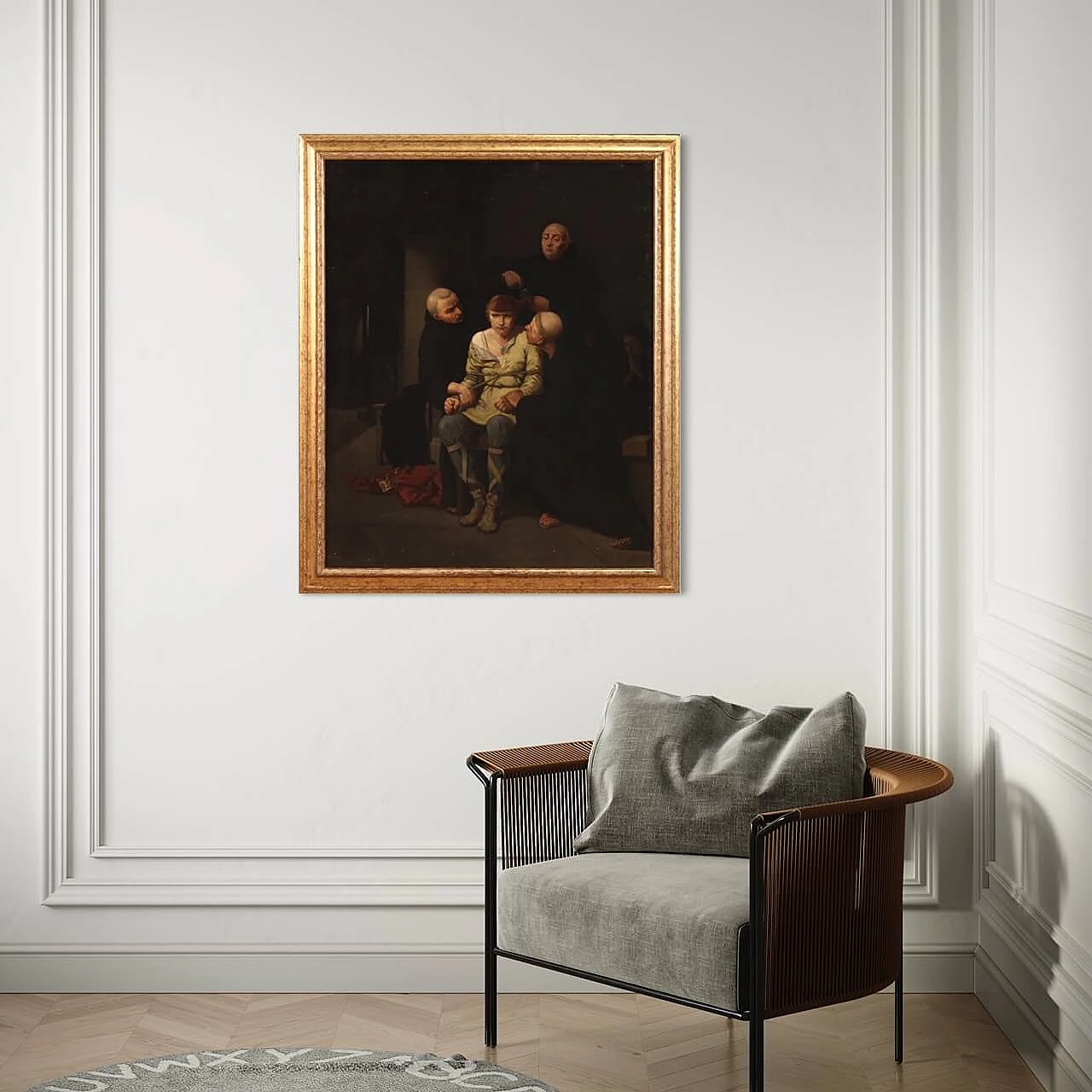
 PLATINUM Seller in Cuneo, Italy
PLATINUM Seller in Cuneo, Italy






.png)





